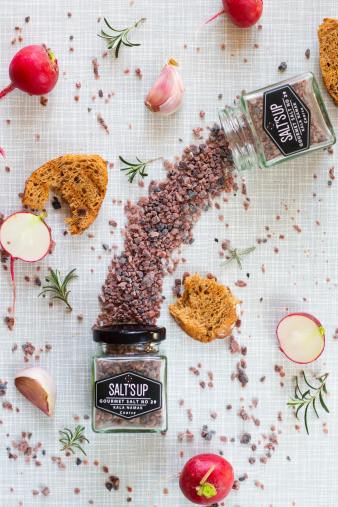Salt is such an important part of our cuisine. Its one of the five basic tastes our tongue can identity.
Salt not just gives its own taste to the food but also enhances the other flavours in the food.
The chemical composition of pure (sea) salt is sodium 40% and chloride 60%. The natural form of salts may contain other minerals in varied proportions depending on the place of origin.
Functions of sodium chloride (common salt)
- It Is required for maintaining the electrolyte balance in the body
- It is required for transporting the nutrients to and fro the cells
- Carrying waste products outside the cells
- Transmit nerve signals
- Contract and relax muscles
With this it’s important to understand that salt needed be excluded completely out of the but should be used judiciously.
Recommended dietary allowance given by ICMR for India suggest sodium to be about 1000 mg and chloride 1800-2300 mg, approx. requirement would be about ½ teaspoon to 1 tsp of salt in the diet every day.
For high blood pressure and heart health its reduced to 1g maximum 2g per day.
Now lets just the major salts in the Indian markets
- Iodised salt- Iodised salt is table salt mixed with a minute amounts of various salts of the elements of iodine. The ingestion of the iodine prevents iodine deficiency. Worldwide, iodine deficiency affects about two billion people and is the leading preventable cause of intellectual and developmental disabilities. Deficiency also causes thyroid gland problems. In many countries, iodine deficiency is a major public health problem that can be cheaply addressed by purposely adding small amounts of iodine to the sodium chloride salts.
https://en.wikipedia.org/wiki/Iodised_salt
This is fortification of the salt and has been made mandatory in India for tackling iodine deficiency.
Iodine deficiency is one of major causes of hypothyroidism and use of iodised salt is recommended in this population.
Check the label for the mention of iodised written on it.

- Pink salt – Himalayan pink salt is mined in the Punjab region of Pakistan, near the Himalayan foothills. Pink salt is predominant is sodium chloride (98%) , calcium, potassium and magnesium (1-2 %)

Photo by Anastasia Zhenina on Unsplash
Why is Himalayan salt considered healthy – after doing the initial research what I have
realised that it is almost similar to the table salt we consume. Then what makes it different and better from the table salt is that it is in the natural form and contains a lot of trace elements.
It should be used in the electrolyte drinks that you consume during the workout for better muscle contraction and better performance.
But it is not iodized and hence would recommend to be used as sprinkle on the salads or in the lemon water that you drink. For cooking you can still use iodized salt.
- Black salt – this is also known as Rock salt or Himalayan black salt. t comes from the salt mines of India, Pakistan, Bangladesh, Nepal, and other Himalayan locations. Black salt was first used in Ayurvedic medicine for its holistic, therapeutic properties. (https://www.webmd.com/diet/health-benefits-black-salt#1)

Photo by Piret Ilver on Unsplash
It has volcanic origins and is made up of sulphur compounds which contribute to its smell and taste. It is also made up of iron and potassium chloride.
Benefits of black salt- Black salt has very low sodium content as compared to sea salt and pink salt. It contains iron, potassium and calcium
Owing to the high sulphur content it used to treat heart burn and bloating and used very popularly in lemon shikanji. It is used in the treatment of reducing high blood pressure as sodium content is low. It has high potassium and can be used in the preworkout drink to prevent muscle spasms.
But as mentioned earlier since it is not iodized it can be used in the drinks and on salads.
- Low sodium salt – low sodium salt is factory made modified salt used for people suffering with high blood pressure. It is low in sodium chloride and high in potassium chloride. This salt is fortified with iodine.
The only advantage for this salt is that it is low on sodium. The disadvantages are that it is still processed.

Disclaimer: this image is used for reference to explain a point and not used to promote the brand.
Let me know how you find this article. Dont forget to share it with your friends!
Avantii Deshpaande
PCOS and GUT health nutritionist
